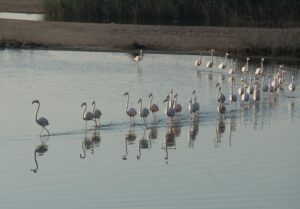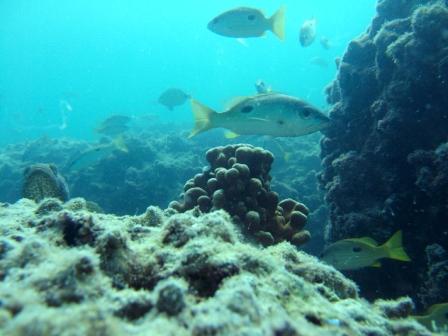ABU DHABI: The Environment Agency – Abu Dhabi, EAD, announced it organized the Stakeholder’s Forum of Marine Protected Areas remotely last week with the participation of 57 representatives from government agencies in the Emirate.
The system and objectives of marine reserves management were highlighted in the forum. Also, the most important environmental aspects and components of marine reserves in Abu Dhabi were introduced. It included an overview of the work of monitoring and evaluating wildlife in marine reserves in Abu Dhabi, and an of the activities and uses in marine protected areas. Discussion on the mechanism for communicating with partners on-site and the cooperation and the roles of partners in Marine Reserves were held.
Marine reserves in the Emirate of Abu Dhabi are Saadiyat Marine National Park, Al Yasat Marine Protected Area, Mangrove Marine National Park, Bul Syayeef Marine Protected Area; Marawah Marine Biosphere Reserve, and Ras Ghanada Marine Protected Area.

Ahmed Al Hashemi, Executive Director of EAD’s Terrestrial and Marine Biodiversity Sector, addressed the importance of the contribution of the strategic partners and their complementing roles and enhancing efforts to conserve species, tightening control, and enforcing environmental legislation and laws within marine reserves. He also highlighted the importance of enhancing environmental awareness by implementing environmental awareness programmes and promoting ecotourism projects.
He also discussed how EAD manages six marine reserves within the Sheikh Zayed Protected Areas Network that represent 13.9 % of the total marine environment in Abu Dhabi. These include Ras Ghanada Marine Reserve, Bul Syayeef Water Reserve, Al Saadiyat Marine National Park, and Mangrove National Park The reserves are habitat rich in biodiversity in terms of the number and density of local species. They also contribute to the containment of endangered species on a local and global level. He also emphasized that these natural reserves preserve important ecosystems, and the species are important for sustainability for current and future generations, as they act as living laboratories that monitor the health of the environment.
Positive results were shown by EAD for several habitats and species and have contributed to the stabilization of the population of important organisms, like sea turtles and dugongs. EAD also contributed to the safety of different environments, such as coral reefs and mangroves, and also in strengthening the country’s position on the global environmental action map.
Source: WAM

































